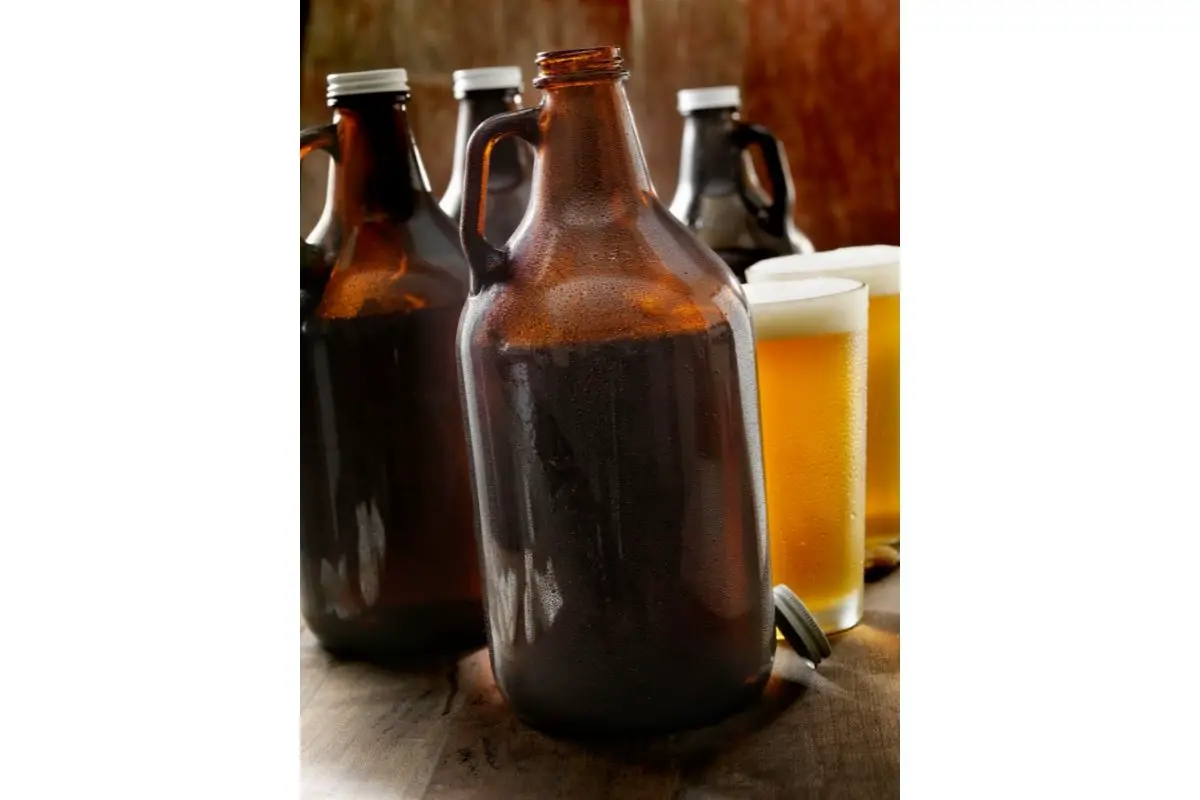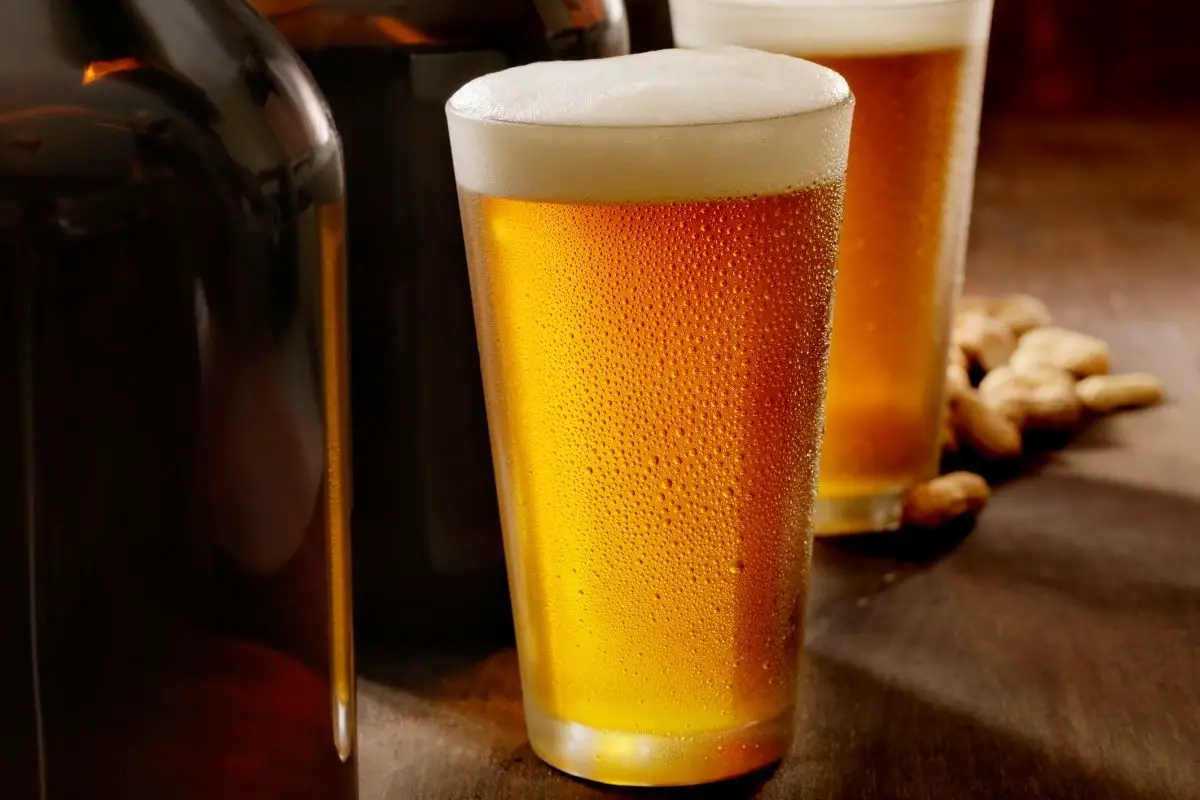You may have seen beer inside cans, pint glasses, and steins, but have you ever seen the beverage inside the beer growler? This seemingly simple jug does a lot more than its appearance would suggest!
Craft beer has always been popular, but it can be difficult to transport beer between different locations. The beer growler provides a storage place and a transportation system for craft beer.

It also allows drinkers to drink straight from ‘the tap’, which is much more preferable than drinking from a can!
We’ll cover more about beer growlers in this article, including what they are, their benefits, and the different types of beer growlers that are available today.
What Are Beer Growlers
Beer growlers are containers that can transport beer between different locations. These look like jugs made out of glass, stainless steel, or ceramic.
The jug will be air-tight, preventing the beer inside from degrading from contact with air.
When Were Growlers First Invented?
Craft beer enthusiasts constantly debate where beer growlers were first invented. The true origins may be hazy, but a popular story is that growlers were first used in the late 1800s.
Growlers back then looked like metal buckets and were used to move beer from taverns to people’s homes.
Some think that the term ‘growler’ came from the noise the metal bucket’s cover made as carbon dioxide left the jug, but others think differently.
Others believe that either the consumer or the bartender would ‘growl’ themselves. The bartender needed to fill the jug with a pint of beer, but the consumer would want their bucket full of over a pint’s worth.
Whoever was disgruntled, the consumer or the bartender, would ‘growl’ about the matter, which may have given rise to the name.
Growlers were made illegal during a particular period, which was fuelled by the fact that fathers made their children pick up jugs of beer for them.
Many were alarmed by this lack of care, particularly those who campaigned in support of prohibition. The controversy over this caused many locations to completely ban the use of growlers.
Over time, the beer growler started to become popular again. In the modern world, the updated version of a beer growler is one of the most common ways of transporting craft beer from the manufacturer.
Purposes Of Growlers
Beer growlers are quite versatile and have several purposes! Here are the main benefits of beer growlers:
Transporting Craft Beer
Growlers are very portable, allowing you to transport beer, or any beverage, easily. No matter how big or small they are, growlers generally have a carrying handle and don’t weigh too much.
This makes it easier to transport several growlers at once. As growlers are airtight, the beer won’t spoil during transport.
Bring Beer From The Brewery Back Home
This will depend on the laws of your state and the brewery in question, but a growler allows you to bring beer home straight from the source.
However, keep in mind that some breweries won’t fill up a growler for you, and if one does, you’ll have to meet certain regulations.
Sharing Homemade Brew
Homebrewing has become very popular over the years, and growlers allow those that make their own brew to share their concoction with others.
Filling up a growler is a lot easier compared to filling up several bottles/
Tap New Kegs
If a beer keg starts to run low, bartenders and hosts can pour the leftover beer into a growler. A new keg can be tapped, ensuring that enough beer remains for consumers and guests.
Different Kinds Of Growlers

Growlers come in several types that all have various advantages. Understanding the difference between each model can help you figure out which one you may prefer.
Glass Growlers
Glass growlers are the most common ones you may see people carrying. These are readily available and come in amber and clear glass.
However, it’s best to opt for amber glass growlers, as clear models allow sunlight to penetrate through. This can make any beer kept inside the vessel go bad as the UV rays affect the beverage.
Glass growlers have a main advantage over opaque ones, as you can see inside the vessel. This allows the brewer to fill the bottle without over or underfilling it.
It also lets consumers see how much is left inside as they drink from it.
Despite this, glass growlers come with a glaring disadvantage, and that is that they can crack, break, or chip if they aren’t cared for.
As glass is so fragile, people looking for a growler to travel should opt for a different material.
Stainless Steel Growlers
Steel growlers are quite popular, as they don’t break easily and can be taken around on the go. Stainless steel also insulates the beer and keeps it colder for longer compared to other materials.
Stainless steel growlers are ideal for hiking, camping, or festivals, as they’re portable, strong, and keep your beverage cool.
However, as stainless steel is opaque, you can’t see inside them. This makes the jug harder to fill up, and you won’t know if you are short on supply.
Ceramic Growlers
Ceramic growlers are popular, but they aren’t as readily available, so they can cost a lot more.
They have a nice appearance, but the material is heavy, so it can be tiring carrying one around. Ceramic is also harder to clean, so you may be frustrated if you want to use yours regularly.
As you cannot see inside a ceramic growler, filling and cleaning the jug can be difficult. Ceramic is also prone to chips and breaking if it isn’t treated properly.
Nevertheless, if you just want a nice-looking growler to keep at home, ceramic models may be the right choice for you.
Conclusion
Now you know what a growler is! These vessels make it easy to move beer from a brewery to pubs, bars, and homes.
They can be made from glass, ceramic, and stainless steel, and need to be airtight to prevent the beer inside from spoiling.
If you do want to transport beer from a brewery, do check your state’s laws and the brewery in question, as this may be illegal in some areas.
- Vevor Still Instructions - June 12, 2023
- Best Proofing Parrots For Home Distilling - February 1, 2023
- What Is A Porter Beer? - June 12, 2022
